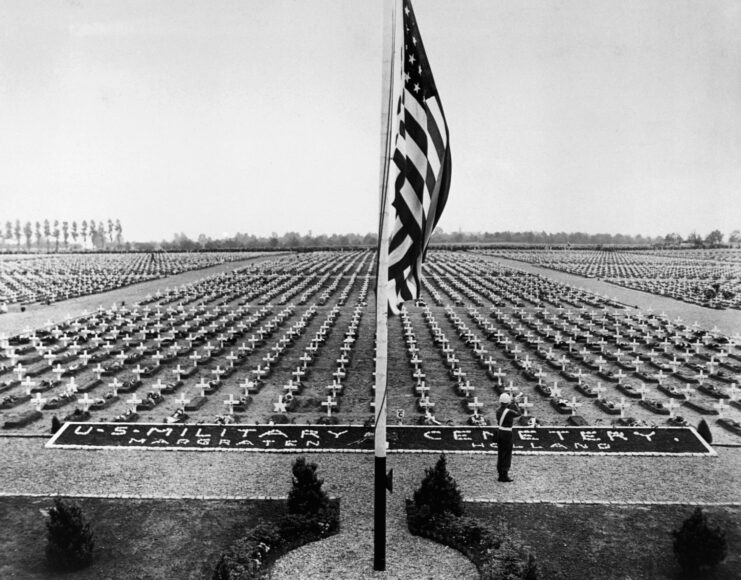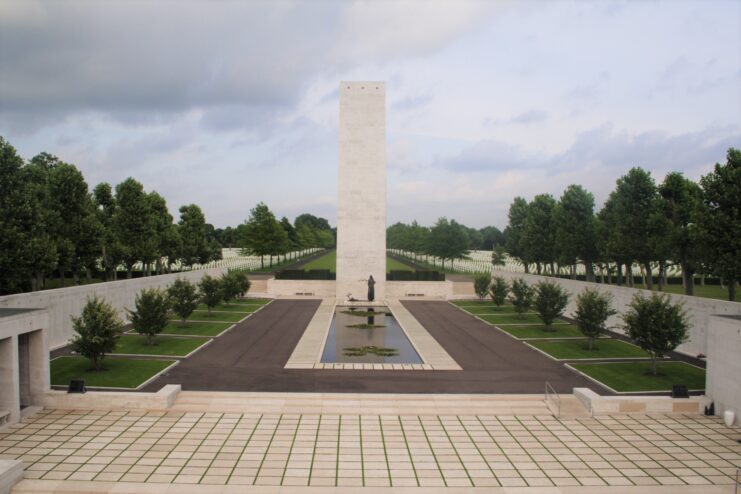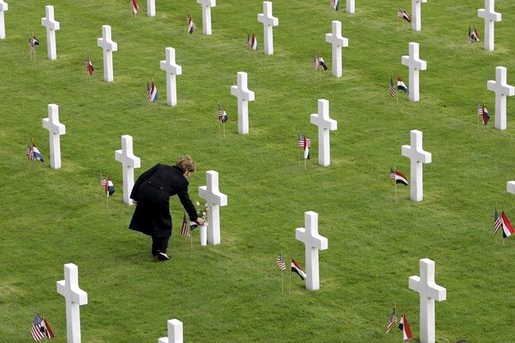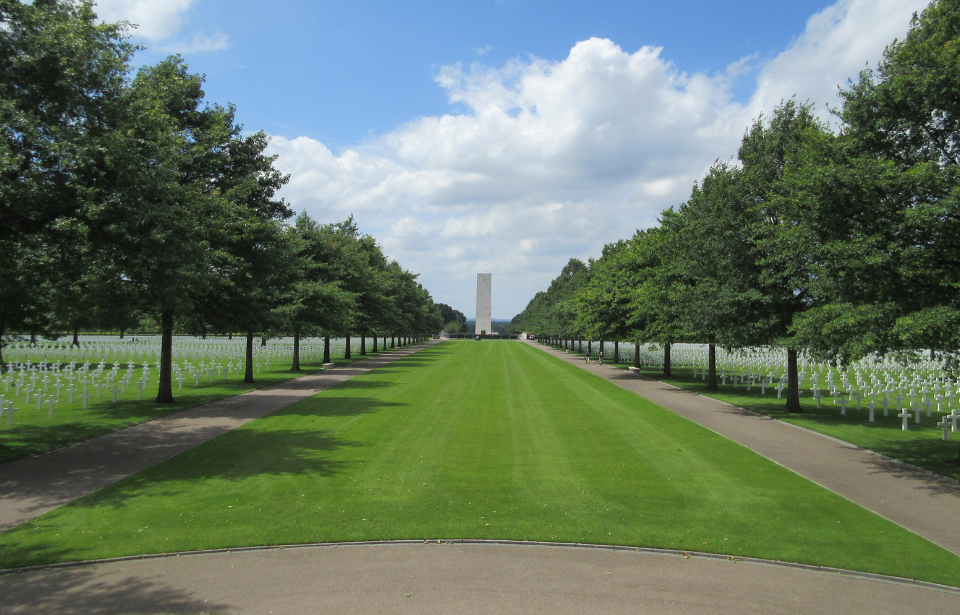Drone footage has captured the true magnitude of the Netherlands American Cemetery and Memorial in Margraten. Built to serve as a final resting place for the American liberators who lost their lives while fighting for the liberation of the Netherlands, the site is frequented by local residents, who’ve ensured those buried there continue to be honored to this day.
History of Margraten American Cemetery

The Netherlands American Cemetery and Memorial – better known as Margraten American Cemetery – was established by Lt. Col. Joseph Shomon of the 611th Grave Registration Company. In November 1944, the US Ninth Army were pushing their way into the Netherlands, having liberated France and Belgium.
World War II was nearing its close, and it was determined the cemetery would have to be built, deconstructed and then rebuilt to accommodate the over 20,000 servicemen who’d died in the final months of the conflict. This number included Allied soldiers, as well as enemy dead.
Margarten American Cemetery was built upon a historic Roman highway that saw the likes of Julius Caesar, Charlemagne and Napoleon use it during their military campaigns. The 960th Quartermaster Corps were the first to begin digging at the site, with the initial 300 decedents being buried there on Thanksgiving 1944. The cemetery was ceremonially opened on Memorial Day 1946 and dedicated in 1960, after being officially opened by Queen Juliana of the Netherlands.
The number of troops buried at Margarten American Cemetery fell to just over 8,000 after other sites were opened and bodies were moved elsewhere. Additionally, families requested the return of their loved ones to America, while the remains of enemy soldiers were sent back to their home countries.
As was intended from the beginning, the cemetery was filled only with American war dead who’d fallen within 373 miles of Margraten, so no US serviceman would remain buried in enemy territory.
A distinct layout

Margraten American Cemetery covers 65.5 acres of land. As visitors enter the site, they’re led toward the Court of Honor, which contains a tall memorial tower at its center and a reflecting pool. At the base of the tower, a statue by Joseph Kiselewski serves as a representation of a mother who suffered the loss of her son and is grieving.
To the left and the right of the reflecting pool are the visitor building and map room. The latter contains three engraved maps containing texts that depict the military operations of the American forces during WWII. Along either side of the court stand the Tablets of the Missing. These two long stone walls feature the names of 1,722 soldiers. The names of those who have since been recovered and identified have a small rosette beside them to indicate this.
Located within the tower is a chapel, and beyond that is the burial area for American soldiers. The gravesites are divided into 16 separate plots. In total, the cemetery is the resting place for 8,288 fallen liberators.
Honoring the fallen who are buried at Margraten American Cemetery

As early as February 1945, a grave adoption program was enacted to provide continued care for Margraten American Cemetery. Offered to the nearby residents, the intention was for those who adopted a grave to regularly visit and, in some cases, maintain continued contact with the soldier’s next of kin in the United States.
Since then, the residents of Margraten have continued to adopt graves at the cemetery as a way of showing their gratitude to the American liberators who made the ultimate sacrifice. Since 2015, every grave has been adopted, including the names etched into the Walls of the Missing.
The support has been so popular with local residents that there’s even a wait list to adopt graves once they become available.
Incredible drone footage
More from us: Manila American Cemetery Is Home to More US WWII Dead Than Any Other Site
Now that you’ve learned about the history of Margraten American Cemetery, it’s time to see just how expansive the site is. The above video, captured via drone, shows the thousands of graves at the cemetery and just how much care has been taken to keep the sacrifices of America’s war dead, alive.
